Hydrocarbons and derivatives
Hydrocarbon compounds are also known as hydrocarbons. They are compounds only containing two elements, hydrogen and carbon. When their molecular hydrogen atoms are replaced by various kinds of other element atoms or atom groups, we can obtain various kinds of hydrocarbon derivatives. German chemist Schorlemmer had discovered butane and other hydrocarbons, and is thus known as the founder of the hydrocarbon chemistry. There are many types of hydrocarbons with number of hydrocarbons with known structure being over 2,000 kinds. Based on the connecting way of carbon bonds, they are divided into chain hydrocarbon and cyclic hydrocarbon, two types with the former one having its carbon atoms connected in a chain shape. According to the saturation degree of hydrogen atom on valence bonds, they are divided into saturated and unsaturated hydrocarbons. Saturated hydrocarbons are namely alkanes, such as methane, ethane and so on; unsaturated hydrocarbons include olefin and alkynes with representation being ethylene and acetylene. Cyclic hydrocarbon has its intramolecular carbon bonds connected into a closed ring. It includes two kinds, alicyclic hydrocarbons and aromatic hydrocarbons. There are many similarities between alicyclic hydrocarbons and chain hydrocarbon. General cyclic hydrocarbons are similar to hydrocarbons while cyclic olefin and cyclic alkyne are respectively similar as alkenes and alkynes. Aromatic hydrocarbons mainly refer to hydrocarbons containing benzene ring structure.
Chain hydrocarbon is also known as aliphatic hydrocarbon due to that during the initial study; it was found that oil lipid contained many of these open chain compounds. The naming of alicyclic hydrocarbons is due to its similar nature as aliphatic hydrocarbons. The nature of aromatic hydrocarbon is different from other hydrocarbons while first discovered several compounds are all scented, leading to the name which is still in use today.
Oil, gas and coal are the main source of hydrocarbons. Petroleum refining can give a variety of alkane mixture such as gasoline, kerosene, diesel, etc; oil cracking, reforming give various kinds of olefins, alicyclic hydrocarbons and aromatic hydrocarbons. Coal tar contains various kinds of aromatic hydrocarbons (e.g., benzene, naphthalene, etc.). Many kinds of higher hydrocarbons are presented in plants such as the pigments contained in tomatoes and carrots. The wax of many kinds of plants and animals also contains higher content of alkanes. For example, beeswax contains C27H56 and C31H64; wax of spinach leaves contains C33H68, C35H72, and C37H76; wax of cabbage leaves contains C29H60 and so on. The main component of natural rubber, polyisoprene also belongs to hydrocarbon. An important application of hydrocarbons is being used as fuel and chemical raw materials. Through secondary processing of petroleum, it can give ethylene, propylene, butadiene, benzene, toluene, xylene and naphthalene, and other basic organic industrial raw materials. From these materials, we can further prepare styrene, ethanol, acetone and other chemicals. Re-use of these raw materials can be used for manufacturing of a variety of plastics, synthetic rubber, synthetic fibers and fine chemical products. Hydrocarbons may also be used as food for certain bacteria to utilize with those proteins (oil protein) excreted by these bacteria proteins being applied as feed. The national scale and level of processing and application of hydrocarbons may reflect the extent of economic and technological development of a country.
Hydrocarbon derivative refers to the general term of many kinds of complicated compound derived from hydrocarbon molecules with one or more hydrogen atoms being substituted by other atoms or atoms groups. Compounds derived from halogen substitution are called halogenated hydrocarbon; derived from hydroxy substitution are called alcohols or phenols; derived from carboxy substitution are called carboxylic acids. Ester, acyl halide, acid anhydride, amides, aldehydes, ketones, amines and nitriles, etc. can be considered to be the compounds derived from hydrocarbons with intramolecular hydrogen atoms being substituted by corresponding atoms. During early 19th century, German chemist Schorlemmer, based on years of experimental and theoretical studies, had first defined organic chemistry as chemistry concerning hydrocarbons and their derivatives. This definition is formulated based on the principles of atom combination theory, being more reasonable and advanced than all the previous definitions, thus further being adopted by many chemists. However, the problem is that it doesn’t distinguish the difference between organic and inorganic substances. The definition of Schorlemmer had greatly promoted the development of the theory regarding to the organic chemistry structure. He was the first man who defined organic compound as above scientific classifications, establishing a scientific system. He was the first man who divided organics into aliphatic and aromatic hydrocarbons and further classified aliphatic compounds into hydrocarbons (saturated hydrocarbons and unsaturated hydrocarbons), halocarbons, alcohols, ethers, aldehydes, ketones, acids, esters and so on.
- Structure:

- Chemical Name:Tosyl cyanide
- CAS:19158-51-1
- MF:C8H7NO2S
- Structure:

- Chemical Name:1,2-Diiodobenzene
- CAS:615-42-9
- MF:C6H4I2
- Structure:

- Chemical Name:(R)-(-)-Epichlorohydrin
- CAS:51594-55-9
- MF:C3H5ClO
- Structure:
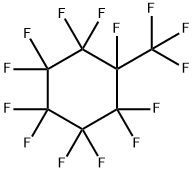
- Chemical Name:PERFLUORO(METHYLCYCLOHEXANE)
- CAS:355-02-2
- MF:C7F14
- Structure:
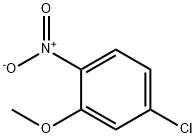
- Chemical Name:5-CHLORO-2-NITROANISOLE
- CAS:6627-53-8
- MF:C7H6ClNO3
- Structure:

- Chemical Name:Ethylcyclohexane
- CAS:1678-91-7
- MF:C8H16
- Structure:
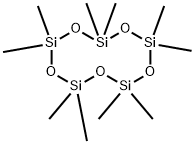
- Chemical Name:Decamethylcyclopentasiloxane
- CAS:541-02-6
- MF:C10H30O5Si5
- Structure:

- Chemical Name:Cyclohexene oxide
- CAS:286-20-4
- MF:C6H10O
- Structure:
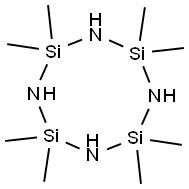
- Chemical Name:Octamethylcyclotetrasilazane
- CAS:1020-84-4
- MF:C8H28N4Si4
- Structure:
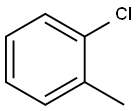
- Chemical Name:2-Chlorotoluene
- CAS:95-49-8
- MF:C7H7Cl
- Structure:
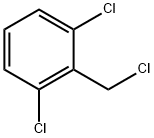
- Chemical Name:2,6-Dichlorobenzyl chloride
- CAS:2014-83-7
- MF:C7H5Cl3
- Structure:
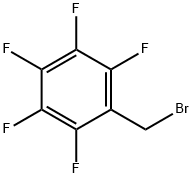
- Chemical Name:α-Bromo-2,3,4,5,6-pentafluorotoluene
- CAS:1765-40-8
- MF:C7H2BrF5
- Structure:

- Chemical Name:1-Hexen-3-ol
- CAS:4798-44-1
- MF:C6H12O
- Structure:

- Chemical Name:1,9-Decadiene
- CAS:1647-16-1
- MF:C10H18
- Structure:
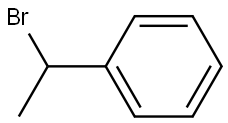
- Chemical Name:(1-Bromoethyl)benzene
- CAS:585-71-7
- MF:C8H9Br
- Structure:

- Chemical Name:1-NONADECENE
- CAS:18435-45-5
- MF:C19H38
- Structure:
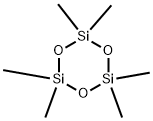
- Chemical Name:Hexamethylcyclotrisiloxane
- CAS:541-05-9
- MF:C6H18O3Si3
- Structure:

- Chemical Name:Iodoethane
- CAS:75-03-6
- MF:C2H5I
- Structure:
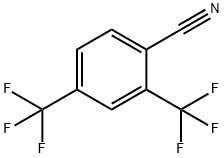
- Chemical Name:2,4-BIS(TRIFLUOROMETHYL)BENZONITRILE
- CAS:177952-38-4
- MF:C9H3F6N
- Structure:
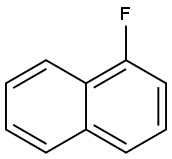
- Chemical Name:1-Fluoronaphthalene
- CAS:321-38-0
- MF:C10H7F
- Structure:
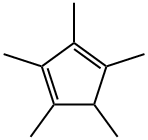
- Chemical Name:1,2,3,4,5-Pentamethylcyclopentadiene
- CAS:4045-44-7
- MF:C10H16
- Structure:
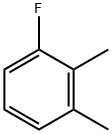
- Chemical Name:3-FLUORO-O-XYLENE
- CAS:443-82-3
- MF:C8H9F
- Structure:
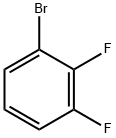
- Chemical Name:1-Bromo-2,3-difluorobenzene
- CAS:38573-88-5
- MF:C6H3BrF2
- Structure:

- Chemical Name:2,4-HEXADIENE
- CAS:592-46-1
- MF:C6H10
- Structure:

- Chemical Name:4-Bromo-2-chloro-1-fluorobenzene
- CAS:60811-21-4
- MF:C6H3BrClF
- Structure:

- Chemical Name:1,2-Difluorobenzene
- CAS:367-11-3
- MF:C6H4F2
- Structure:
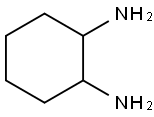
- Chemical Name:1,2-Diaminocyclohexane
- CAS:694-83-7
- MF:C6H14N2
- Structure:
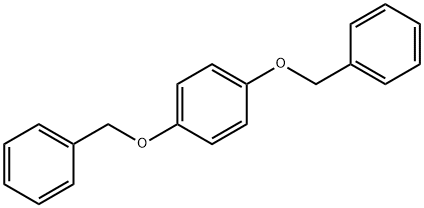
- Chemical Name:1,4-Dibenzyloxybenzene
- CAS:621-91-0
- MF:C20H18O2
- Structure:
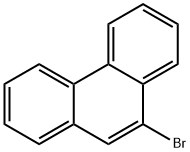
- Chemical Name:9-Bromophenanthrene
- CAS:573-17-1
- MF:C14H9Br
- Structure:

- Chemical Name:TRANS-4-OCTENE
- CAS:14850-23-8
- MF:C8H16
- Structure:

- Chemical Name:1-UNDECENE
- CAS:821-95-4
- MF:C11H22
- Structure:
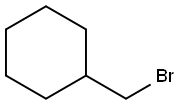
- Chemical Name:Cyclohexylmethyl bromide
- CAS:2550-36-9
- MF:C7H13Br
- Structure:

- Chemical Name:1-Bromopropane
- CAS:106-94-5
- MF:C3H7Br
- Structure:

- Chemical Name:VINYLCYCLOHEXANE
- CAS:695-12-5
- MF:C8H14
- Structure:

- Chemical Name:Bromoethane
- CAS:74-96-4
- MF:C2H5Br
- Structure:
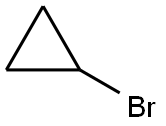
- Chemical Name:Cyclopropyl bromide
- CAS:4333-56-6
- MF:C3H5Br
- Structure:
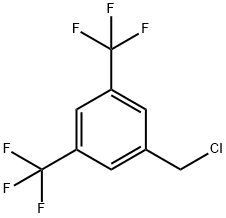
- Chemical Name:3,5-Bis(trifluoromethyl)benzyl chloride
- CAS:75462-59-8
- MF:C9H5ClF6
- Structure:

- Chemical Name:3-Bromotoluene
- CAS:591-17-3
- MF:C7H7Br
- Structure:
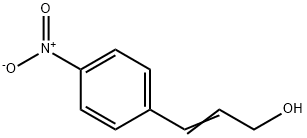
- Chemical Name:4-NITROCINNAMYL ALCOHOL
- CAS:1504-63-8
- MF:C9H9NO3
- Structure:

- Chemical Name:1-Bromo-3-phenylpropane
- CAS:637-59-2
- MF:C9H11Br
- Structure:

- Chemical Name:1-Bromo-4-chloro-2-methylbenzene
- CAS:14495-51-3
- MF:C7H6BrCl
- Structure:

- Chemical Name:N-THIONYLANILINE
- CAS:1122-83-4
- MF:C6H5NOS
- Structure:

- Chemical Name:1-Bromo-3-chloropropane
- CAS:109-70-6
- MF:C3H6BrCl
- Structure:

- Chemical Name:3-BROMOCHLOROBENZENE
- CAS:108-37-2
- MF:C6H4BrCl
- Structure:
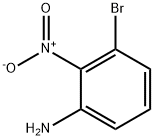
- Chemical Name:3-Bromo-2-nitroaniline
- CAS:7138-15-0
- MF:C6H5BrN2O2
- Structure:
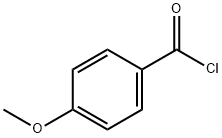
- Chemical Name:4-Methoxybenzoyl chloride
- CAS:100-07-2
- MF:C8H7ClO2
- Structure:
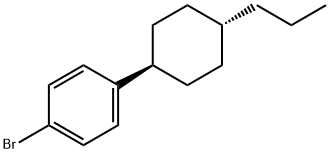
- Chemical Name:1-Bromo-4-(trans-4-propylcyclohexyl)benzene
- CAS:86579-53-5
- MF:C15H21Br
- Structure:

- Chemical Name:2-METHYL-1-BUTENE
- CAS:563-46-2
- MF:C5H10
- Structure:

- Chemical Name:Bromocyclopentane
- CAS:137-43-9
- MF:C5H9Br
- Structure:

- Chemical Name:1,2-Epoxyoctane
- CAS:2984-50-1
- MF:C8H16O
- Structure:

- Chemical Name:4-Methyl-1-pentene
- CAS:691-37-2
- MF:C6H12
- Structure:
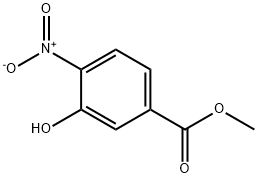
- Chemical Name:Methyl 3-hydroxy-4-nitrobenzoate
- CAS:713-52-0
- MF:C8H7NO5
- Structure:

- Chemical Name:4-Chlorobenzyl chloride
- CAS:104-83-6
- MF:C7H6Cl2
- Structure:
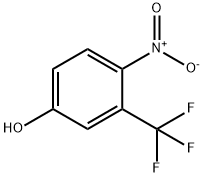
- Chemical Name:4-NITRO-3-(TRIFLUOROMETHYL)PHENOL
- CAS:88-30-2
- MF:C7H4F3NO3
- Structure:

- Chemical Name:N-TETRATETRACONTANE
- CAS:7098-22-8
- MF:C44H90
- Structure:
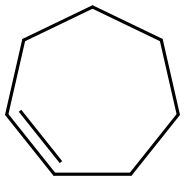
- Chemical Name:CYCLOHEPTENE
- CAS:628-92-2
- MF:C7H12
- Structure:

- Chemical Name:Chlorobenzene
- CAS:108-90-7
- MF:C6H5Cl
- Structure:
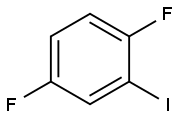
- Chemical Name:2,5-DIFLUOROIODOBENZENE
- CAS:2265-92-1
- MF:C6H3F2I
- Structure:
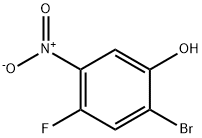
- Chemical Name:2-BROMO-4-FLUORO-5-NITROPHENOL
- CAS:84478-87-5
- MF:C6H3BrFNO3
- Structure:
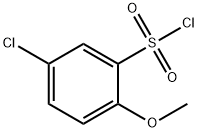
- Chemical Name:5-Chloro-2-methoxybenzenesulfonyl chloride
- CAS:22952-32-5
- MF:C7H6Cl2O3S
- Structure:

- Chemical Name:alpha,alpha'-Dichloro-p-xylene
- CAS:623-25-6
- MF:C8H8Cl2
- Structure:
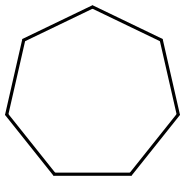
- Chemical Name:CYCLOHEPTANE
- CAS:291-64-5
- MF:C7H14
- Structure:
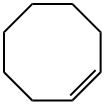
- Chemical Name:CYCLOOCTENE
- CAS:931-87-3
- MF:C8H14
- Structure:
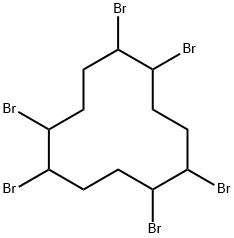
- Chemical Name:1,2,5,6,9,10-Hexabromocyclododecane
- CAS:3194-55-6
- MF:C12H18Br6
- Structure:
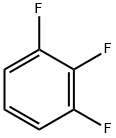
- Chemical Name:1,2,3-Trifluorobenzene
- CAS:1489-53-8
- MF:C6H3F3
- Structure:

- Chemical Name:Anthracene
- CAS:120-12-7
- MF:C14H10
- Structure:
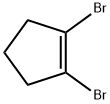
- Chemical Name:1,2-Dibromocyclopentene
- CAS:75415-78-0
- MF:C5H6Br2
- Structure:
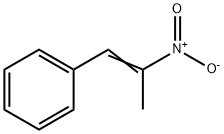
- Chemical Name:1-Phenyl-2-nitropropene
- CAS:705-60-2
- MF:C9H9NO2
- Structure:

- Chemical Name:Bromochloromethane
- CAS:74-97-5
- MF:CH2BrCl
- Structure:
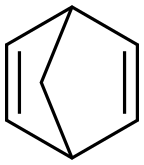
- Chemical Name:2,5-Norbornadiene
- CAS:121-46-0
- MF:C7H8
- Structure:

- Chemical Name:1,2-Dichloro-4-(chloromethyl)benzene
- CAS:102-47-6
- MF:C7H5Cl3
- Structure:

- Chemical Name:Cyclopentyl chloride
- CAS:930-28-9
- MF:C5H9Cl
- Structure:

- Chemical Name:Octaphenylcyclotetrasiloxane
- CAS:546-56-5
- MF:C48H40O4Si4
- Structure:
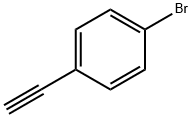
- Chemical Name:4-Bromophenylacetylene
- CAS:766-96-1
- MF:C8H5Br
- Structure:

- Chemical Name:2-(Bromomethyl)naphthalene
- CAS:939-26-4
- MF:C11H9Br
- Structure:

- Chemical Name:CYCLOHEXYL ISOCYANIDE
- CAS:931-53-3
- MF:C7H11N
- Structure:

- Chemical Name:p-Fluorotoluene
- CAS:352-32-9
- MF:C7H7F
- Structure:

- Chemical Name:Benzocyclobutene
- CAS:694-87-1
- MF:C8H8
- Structure:

- Chemical Name:2-Methylbenzyl bromide
- CAS:89-92-9
- MF:C8H9Br
- Structure:
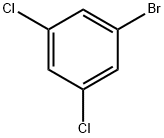
- Chemical Name:1-Bromo-3,5-dichlorobenzene
- CAS:19752-55-7
- MF:C6H3BrCl2
- Structure:
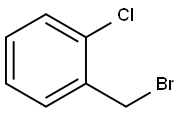
- Chemical Name:2-Chlorobenzyl bromide
- CAS:611-17-6
- MF:C7H6BrCl
- Structure:

- Chemical Name:Dichloromethane
- CAS:75-09-2
- MF:CH2Cl2
- Structure:
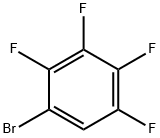
- Chemical Name:1-BROMO-2,3,4,5-TETRAFLUOROBENZENE
- CAS:1074-91-5
- MF:C6HBrF4
- Structure:
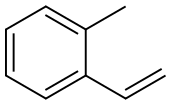
- Chemical Name:2-METHYLSTYRENE
- CAS:611-15-4
- MF:C9H10
- Structure:

- Chemical Name:Methylcyclohexane
- CAS:108-87-2
- MF:C7H14
- Structure:
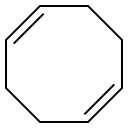
- Chemical Name:1,5-Cyclooctadiene
- CAS:111-78-4
- MF:C8H12
- Structure:
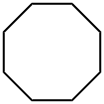
- Chemical Name:Cyclooctane
- CAS:292-64-8
- MF:C8H16
- Structure:

- Chemical Name:(S)-(+)-Epichlorohydrin
- CAS:67843-74-7
- MF:C3H5ClO
- Structure:

- Chemical Name:1-Methylcyclopentene
- CAS:693-89-0
- MF:C6H10
- Structure:

- Chemical Name:Dibromomethane
- CAS:74-95-3
- MF:CH2Br2
- Structure:
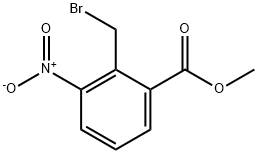
- Chemical Name:Methyl 2-bromomethyl-3-nitrobenzoate
- CAS:98475-07-1
- MF:C9H8BrNO4
- Structure:

- Chemical Name:(Bromomethyl)cyclopropane
- CAS:7051-34-5
- MF:C4H7Br
- Structure:
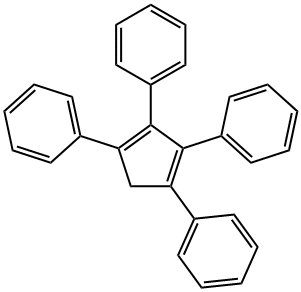
- Chemical Name:1,2,3,4-TETRAPHENYL-1,3-CYCLOPENTADIENE
- CAS:15570-45-3
- MF:C29H22
- Structure:

- Chemical Name:1-Fluoro-2-iodobenzene
- CAS:348-52-7
- MF:C6H4FI
- Structure:
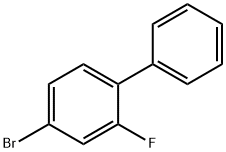
- Chemical Name:4-Bromo-2-fluorobiphenyl
- CAS:41604-19-7
- MF:C12H8BrF
- Structure:

- Chemical Name:1-Chloro-4-fluorobenzene
- CAS:352-33-0
- MF:C6H4ClF
- Structure:

- Chemical Name:Cyclopentene oxide
- CAS:285-67-6
- MF:C5H8O
- Structure:

- Chemical Name:2-(Chloromethyl)-2-methyloxirane
- CAS:598-09-4
- MF:C4H7ClO
- Structure:
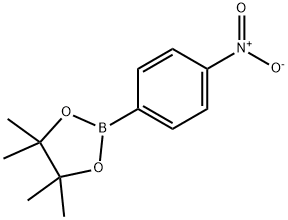
- Chemical Name:4-Nitrophenylboronic acid pinacol ester
- CAS:171364-83-3
- MF:C12H16BNO4
- Structure:

- Chemical Name:CIS-STILBENE
- CAS:645-49-8
- MF:C14H12